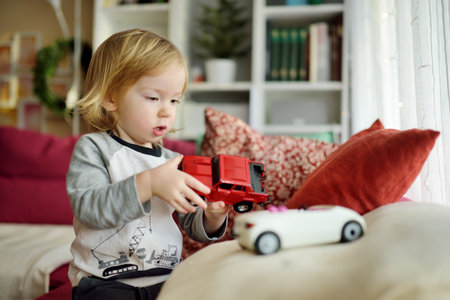Choosing a Kid-Friendly Campsite
When you’re planning a family camping trip, the first and most important step is choosing a campsite that’s safe and comfortable for your kids. The right environment not only sets the tone for your whole adventure but also helps minimize risks and makes it easier to create routines that keep everyone happy.
Key Factors to Consider for Safety
Proximity to Hazards: Look for campsites that are well away from bodies of water like rivers, lakes, or steep drop-offs, unless they’re securely fenced or supervised. Avoid locations near cliffs or dense forested areas where children might wander off or get lost.
Safe Distance from Fire Pits and Roads
Choose spots where tents can be set up far enough from fire rings, grills, and parking lots. This reduces accidental burns and keeps kids away from moving vehicles.
Comfort Features for Kids
Flat, Shaded Ground: Pick a level site with soft ground—think grass or pine needles rather than rocky patches—for easier tent setup and comfier sleeping. Shade is essential to keep tents cool during the day, so look for trees or natural cover.
Amenities Make a Difference
If you’re new to camping with kids, consider campgrounds that offer restrooms, potable water, picnic tables, and even playgrounds. These features make daily routines smoother and more enjoyable for both parents and children.
Visibility and Supervision
Select a spot where you can easily keep an eye on your kids as they explore. Open areas with clear sightlines help you supervise playtime without constant worry, so everyone can relax and enjoy the outdoors safely.
2. Setting Up a Safe Camp Area
Creating a safe camp environment is the foundation for enjoyable and stress-free outdoor adventures with kids. Before any fun can begin, its crucial to establish clear boundaries, identify potential hazards, and set up zones that help children understand where they can explore and where caution is needed.
Guidelines for a Secure Campsite Layout
Start by selecting a flat area away from cliffs, water bodies, or dense brush. Ensure your site is at least 200 feet from lakes or streams to reduce the risk of accidental falls or water-related incidents. Remove debris, rocks, and sharp objects to create an even ground for tents and play areas. Set up tents in a circle or semi-circle so adults can monitor all exits easily.
Establishing Boundaries
Kids thrive on structure, especially in unfamiliar environments. Use visible markers like brightly colored flags, rope lines, or even natural features (large rocks or fallen logs) to define the edges of the campsite. Explain these boundaries to children upon arrival and reinforce their importance throughout your stay.
| Area | Purpose | Safety Tips |
|---|---|---|
| Tent Zone | Sleeping & Resting | Keep free from food to deter animals; zip up tents when not in use |
| Cooking Zone | Meal Prep & Eating | Set up downwind from sleeping area; keep matches/lighters out of reach; mark with cones or tape |
| Play Zone | Supervised Recreation | Select soft, open space; no sharp sticks or tools allowed; always within adult sightline |
| Fire Pit Area | Campfire & Heat Source | Cordoned off with rocks/logs; strict “no kids without adults” rule; bucket of water nearby at all times |
Hazard-Free Zones and Kid-Friendly Safety Briefings
Walk through the campsite together and point out both “safe” and “off-limits” areas. Make it interactive—let kids help place markers or choose where their tent will go (within boundaries). Review basic safety rules: stay within marked zones, never approach the fire pit alone, and ask before leaving the central camp area. Repetition helps younger children remember guidelines, so make this part of your daily routine.

3. Creating Kid-Friendly Rules and Routines
Establishing clear, age-appropriate rules and routines is the backbone of a safe and happy camping experience for kids. Start by involving your children in the rule-making process—kids are more likely to follow guidelines they helped create. Keep your rules simple and easy to remember, such as “Always stay within sight of an adult,” “Never run near the fire pit,” or “Put away gear after using it.” For younger children, consider using visual aids or repeating short phrases to reinforce these boundaries. When designing routines, break down the camp day into predictable steps: set times for meals, handwashing, exploring, and quiet time. Use checklists or fun songs to make transitions smoother between activities. Safety routines should also cover what to do if someone gets lost—review landmarks together and assign a meeting spot that everyone can find easily. By consistently modeling and reinforcing these rules, you help kids build confidence while ensuring everyone stays safe from sunrise to bedtime.
4. Daytime Camp Activities and Supervision
Daytime at camp is when kids are most active, curious, and sometimes unpredictable. Establishing safe routines for play, exploration, and chores—always with reliable adult supervision—is the backbone of a secure camp experience. Here’s how to structure the day effectively:
Organizing Safe Play and Exploration
Designate specific areas for different activities (like sports, crafts, or nature walks), and clearly mark boundaries. Use age-appropriate rules so everyone knows what’s allowed. For example, younger children should stay within sight of adults at all times, while older kids can have more freedom—but always with regular check-ins.
Sample Activity Schedule with Supervision Levels
| Time | Activity | Supervision Level |
|---|---|---|
| 9:00-10:00 AM | Nature Walk | Direct (1 adult per 5 kids) |
| 10:15-11:00 AM | Arts & Crafts | Stationed (adult in room) |
| 11:15 AM-12:00 PM | Group Games (outdoors) | Active Monitoring (adults on field) |
| 12:30-1:00 PM | Lunch Chores | Assisted (adult guides tasks) |
Safe Chore Participation
Chores teach responsibility but must be matched to each child’s ability. Assign tasks like sweeping, setting tables, or sorting supplies. Provide clear instructions and demonstrate safe tool use. Keep chemicals and sharp objects locked away unless an adult is present to help.
Best Practices for Consistent Supervision
- Buddy System: Pair up campers so no one is alone during free play or transitions.
- Check-in Points: Set regular times for head counts—especially after moving between activities.
- Visible Adults: Wear bright shirts or vests so kids can quickly spot supervisors.
- Cultural Sensitivity: Celebrate diversity in games and chores, making sure all kids feel included and safe.
Troubleshooting Common Daytime Challenges
If you notice conflicts or unsafe behavior, pause the activity and address it as a group. Use these moments to reinforce safety routines. Remember, a predictable schedule helps reduce anxiety and risky behavior among campers.
5. Meal Times and Food Safety
Best Practices for Keeping Meal Areas Clean
When camping with kids, maintaining a clean meal area is not just about comfort—it’s crucial for safety. Set up designated eating spaces away from sleeping areas, and use washable tablecloths or mats to catch spills. Encourage kids to wash their hands with biodegradable soap or use hand sanitizer before eating. After meals, make sure all scraps and trash are promptly disposed of in sealed containers or packed out. Instruct children to wipe down surfaces and double-check that nothing edible is left behind, turning clean-up into a team activity that helps everyone stay safe.
Preventing Wildlife Encounters
Food smells can attract curious wildlife, so it’s important to store all food in airtight bins or bear-proof containers when not in use. Teach kids never to bring snacks into tents or leave wrappers lying around. If you’re camping in an area with bears or raccoons, demonstrate how to hang food from a tree branch at least 10 feet off the ground and 4 feet away from the trunk. Make it a routine to check the campsite together every evening, reinforcing the idea that respecting wildlife keeps both people and animals safer.
Teaching Kids About Campfire Safety
Campfires are a classic part of the camping experience, but they require careful supervision—especially with children involved. Establish clear rules: only adults start the fire, a “no running” zone around the fire ring, and always keep water or a fire extinguisher nearby. Take time to show kids how to safely roast marshmallows using long sticks and how to avoid leaning over flames. When it’s time to put out the fire, involve your kids in dousing embers with water until everything is cool to the touch. These habits build respect for fire safety while letting everyone enjoy mealtime traditions.
Turning Routines Into Learning Moments
Integrating these practices into your daily camp schedule turns meal times into valuable learning moments. Kids gain practical skills—like proper hand-washing, waste management, and wildlife awareness—that stick with them beyond the trip. Plus, by making food safety a shared responsibility, you foster teamwork and confidence in every camper.
6. Evening Wind-Down and Bedtime Procedures
Creating a Calm Transition to Bedtime
The last stretch of the day at camp is just as important as the first. Kids need time to unwind, process their experiences, and settle down for a restful night. Start by dimming lights around the campsite, lowering voices, and guiding children through quiet activities like reading storybooks, sharing highlights of their day, or gentle stretching. These calming rituals help kids transition from an active day to a peaceful mindset, making bedtime smoother and more comforting.
Establishing Consistent Nighttime Routines
Consistency is key when it comes to bedtime, even in a camp setting. Set clear expectations for brushing teeth, using the restroom, and changing into pajamas. A familiar routine can provide children with a sense of security despite the different environment. Give everyone a set bedtime and stick to it each night to help young campers’ bodies adjust naturally, promoting better sleep and happier mornings.
Ensuring Safe Sleeping Arrangements
Safety doesn’t end when the sun goes down. Double-check that tents are zipped up securely and that sleeping bags are placed on flat, debris-free ground. Make sure flashlights or lanterns are within reach for each child in case they need to get up during the night. Position tents close enough for adult supervision but far enough apart for privacy. Assign an adult or responsible older camper to be available throughout the night should any issues arise.
Nighttime Security Checks
Before lights out, do a quick sweep of the campsite: secure all food items away from sleeping areas, confirm campfires are fully extinguished, and review any emergency plans with your group. Let kids know whom to wake if they feel scared or need help during the night. This reassurance helps them relax and enjoy a safe, comfortable night’s sleep under the stars.
Takeaway
Evening wind-down routines and secure sleeping arrangements are essential pieces of a safe camping experience for kids. With calm rituals and thoughtful preparation, you’ll help your campers recharge overnight—ready for another adventure-filled day.

